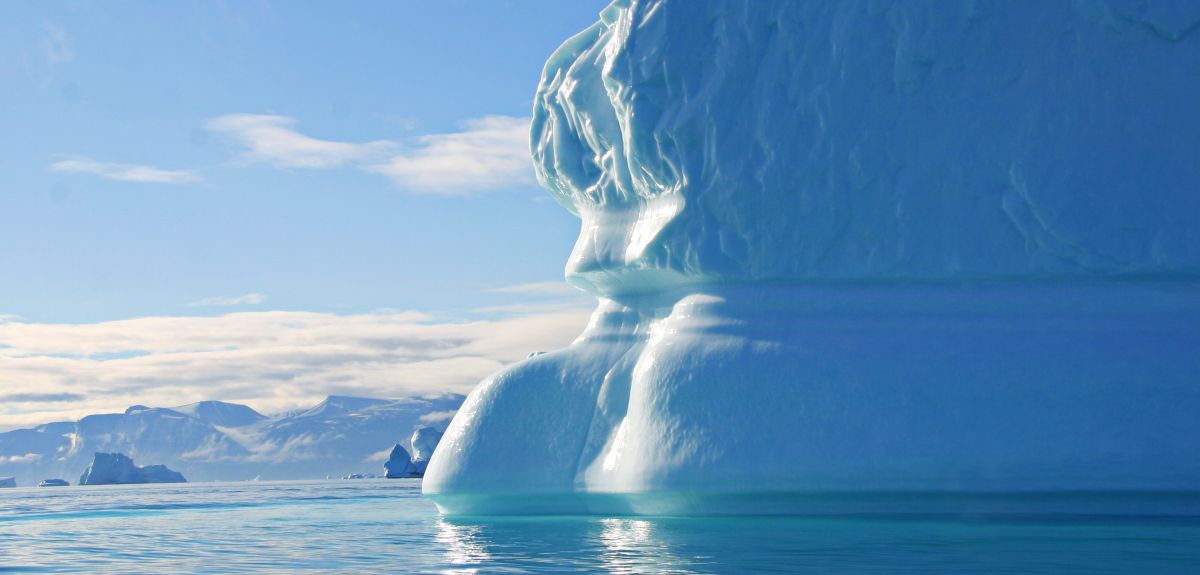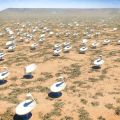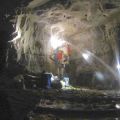
Image: Shutterstock
Seashells and sediment: measuring oxygen
It is possible to measure oxygen concentrations in sea water in the remote past, a study published this month in Nature Geoscience demonstrates.
These measurements can then be used to infer changes in carbon from biological sources.
This information could potentially be very important for calibrating climate change models, giving an insight into the past that could help predict future climate conditions.
In the study, researchers at Oxford, Cambridge and Hamburg reconstructed oxygen concentrations at the bottom of the ocean from nearly 22,000 years ago. During this time-period (known as the Last Glacial Maximum, the LGM), ice-sheets covered most of North America, northern Europe, and northern Asia. In Britain most of the north (including Yorkshire and the Lake District) and large parts of Wales would have been under an ice sheet.
I asked lead author Dr Babette Hoogakker from Oxford University’s Department of Earth Sciences how the team were able to reconstruct deep ocean conditions from thousands of years ago, and what these results mean for the future.
OxSciBlog: How did you go about measuring deep ocean conditions from such a long time ago, and in such an inaccessible location?
Babette Hoogakker: We did this by looking at the shells of two species of benthic foraminifera (single-cell, deep ocean bottom dwelling animals with a chalky shell) sampled from a deep Atlantic ocean sediment core. These animals are sensitive to physical changes in the environment around them, so their shells can serve as a record of environmental conditions around the animal: they have been used extensively to reconstruct sea water properties.
OSB: What is the link between these fossil animals and oxygen levels?
BH: Oxygen is needed for the breakdown and decay of organic material settles in the sediment at the bottom of the ocean. By measuring the relative levels of different carbon isotopes, we can track the amount of this breakdown. We also already know that the more oxygen there is in the overlying sea water, the more organic material gets broken down.
But as you go deeper into the sediment, more oxygen is used up, until there just isn't enough oxygen for the breakdown of organic material. This is the anoxic boundary.
We could track this boundary by comparing the levels of carbon isotopes in the shells of Cibicidoides wuellerstorfi, which live just on top of ocean floor sediments, versus Globobulimina spp., a related species which lives burrowed down into sediment, at the anoxic boundary.
By comparing carbon isotope levels between these two species, one of which had lived in seawater and one which had lived at the anoxic boundary, we could work out oxygen concentrations at the bottom of the sea.
In doing so, we came up with the first quantitative measurements of deep water oxygen levels in the remote past.
OSB: Were the measurements as you had expected?
BH: From other measurements we knew oxygen concentrations were likely to be lower, but until now we just didn't have any way to quantify by how much!
The solubility of oxygen in seawater increases as temperatures fall. So during the Last Glacial Maximum (LGM), the oceans could well have contained more dissolved oxygen.
Instead, we found that during the LGM, ocean oxygen levels were 20% lower than today.
We know that ocean circulation was very different during the last ice age, so this reduction could be because of slower renewal of deep ocean waters. Another reason for the lower oxygen levels could be that more organic material was being broken down, because more organic material sank to the deep ocean.
OSB: What effects did this increased decay of organic material have?
BH: As organic material breaks down, it releases the carbon it had contained back into the water, where it forms dissolved chemical compounds such as bicarbonate. So the result of this increased decay was that there was more dissolved carbon in the oceans, meaning that the oceans acted as a significant sink for carbon.
From measurements of fossil air trapped in ancient ice cores, we already know that there was a significant decrease in atmospheric carbon dioxide during the LGM. We calculate that 15% of this decrease is due to the process we found: more decayed carbon being locked away in the ocean.
OSB: What implications do these reconstructions of the past have for future climate?
BH: These results provide further information for testing computational models of climate change: they provide quantitative constraints for changes in deep ocean oxygen and organic carbon during times of natural climate change.
More importantly, as the ice-caps melt due to man-made warming, projected changes in ocean currents make it likely that there will be less oxygen in the oceans in the future.
Ocean ‘dead zones’ (such as areas deprived of oxygen) do indeed appear to be expanding as a result of human-induced climate change. Such dead zones affect marine life, and the resulting changes in fisheries and the food chain are likely to have major socio-economic implications.
A report of the research, entitled ‘Glacial-interglacial changes in bottom-water oxygen content on the Portuguese margin’ is published in Nature Geoscience.
 Coming Soon: the Universe in 3D Widescreen
Coming Soon: the Universe in 3D Widescreen Economic games don't show altruism
Economic games don't show altruism Can science find the right diet for you?
Can science find the right diet for you? Ancient waters expand search for 'deep life'
Ancient waters expand search for 'deep life' Gannets of the far North
Gannets of the far North